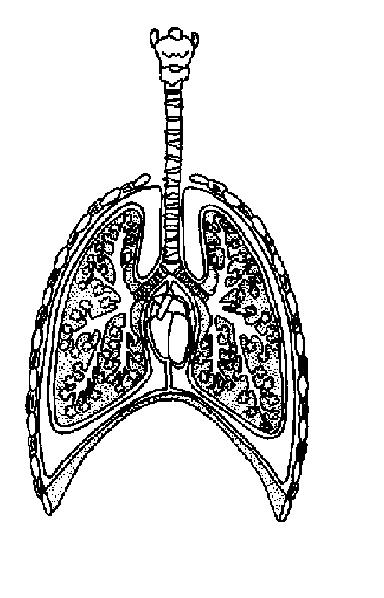45 d on food labels
Understanding the USDA Organic Label Amidst nutrition facts, ingredient lists, and dietary claims on food packages, "organic" might appear as one more piece of information to decipher when shopping for products. Understanding what the organic label means can help shoppers make informed purchasing choices. Organic is a labeling term found on products that have been produced using cultural, biological, and mechanical practices ... Reading Food Labels - What You Need to Know - Drugs.com This label tells you what a serving size is and how many servings are in the package. Other information shown includes the amount of calories, fat, carbohydrate, protein, vitamins and minerals found in the food. Begin reading food labels at the top, with the serving size and number of servings in the package.
USDA Labeling for Genetically Modified Food Updated - WebMD Jan. 4, 2022. The U.S. Department of Agriculture's new food labeling rules for genetically modified food products went into effect Jan. 1, 2022. The big difference for consumers is that they ...

D on food labels
13 Misleading Food Label Claims and How Not to Be Tricked 1. Label Says "Sugar-Free". The Food and Drug Administration (FDA) provides guidelines for a variety of common food labels, including sugar-free. While the term suggests that products labeled this way would be completely free of sugar, they can actually contain up to 0.5 grams of sugar in a single serving size. Labeling Policies | Food Safety and Inspection Service The U.S. Department of Agriculture's Food Safety and Inspection Service (USDA, FSIS) contracted with the Research Triangle Institute (RTI) to conduct focus groups with consumers on their perception and understanding of labeling terms and features that convey that a product is NRTE and thus requires further cooking for safety before consumption. Food Label Reading - What You Need to Know - Drugs.com Shoppers can tell which foods are higher or lower in vitamins and minerals. Eat a wide variety of foods so that these % numbers from all of your food add up to 100% each day. Following are the recommended daily amount of some vitamins and minerals. Vitamin A % - 5000 units per day. Vitamin C % - 60mg per day.
D on food labels. Food labelling | New Zealand Government Food labelling. Food labels help you make informed choices about the products you buy. The Ministry for Primary Industries website has information about food labelling. Find out what each part of the label means and what to do if you find a problem with a food label. How to read food labels. Last updated 19 January 2022. How to Understand and Use the Nutrition Facts Label | FDA Overview. The information in the main or top section (see #1-4) of the sample nutrition label (below) can vary with each food and beverage product; it contains product-specific information ... What are the Requirements for a Food Label? - Short Food Labeling Guide Required Food Label Information. The FDA requires seven areas of information on food labels for legal sale of these goods. These items include the following information about the food product. All labeling must be in English, though some foreign language is appropriate so long as the English translation is also present. Don't Be Fooled by Food Labels - WebMD Correct Answer: It's confusing, but if a label says "zero" trans fats, it can still have as much as 1/2 gram per serving. So if you eat a few servings, it can add up. Trans fats are the most ...
How To Read Food and Beverage Labels | National Institute on Aging At the top of the Nutrition Facts label, you will find the total number of servings in the container and the food or beverage's serving size. The serving size on the label is based on the amount of food that people may typically eat at one time and is not a recommendation of how much to eat. Read more about serving and portion sizes. GMO Foods Will Be Labeled 'Bioengineered' - Verywell Health Studies have shown that genetically engineered foods are just as safe to consume as foods that have not been genetically engineered. If you decide to avoid genetically engineered foods, keep an eye out for these new labels on grocery store shelves. But remember, certain foods and producers are exempt from using the new bioengineered labels. What Food Labels Tell You | Smokefree If you want to take in less of a nutrient such as fat or sodium, choose foods with a lower % DV—5 percent or less. If you want to take in more of a nutrient such as fiber, pick foods with a higher % DV—20 percent or more. The information on a Nutrition Facts label is based on 2,000 calories a day. You may need to eat less or more than 2,000 ... FDA Food Product Labeling & Packaging Requirements | ESHA Research Food Product Labeling and Packaging 101. The FDA regulates most packaged foods sold in the United States and has specific requirements for what elements a package must contain (e.g. a Nutrition Facts panel, ingredient statement, etc.). In order to sell your food products, you must comply with the FDA's packaging laws unless your operation is ...
The Basics of the Nutrition Facts Label Step 4: Check Out the Nutrition Terms. Low calorie: 40 calories or less per serving. Low cholesterol: 20 milligrams or less and 2 grams or less of saturated fat per serving. Reduced: At least 25% less of the specified nutrient or calories than the usual product. Good source of: Provides at least 10 to 19% of the Daily Value of a particular ... FDA Nutrition Label Update: How to Read the New Food Label | U.S. News The FDA updated the Nutrition Facts label requirements in 2016, and food manufacturers began implementing the requirements in 2020 and 2021. The majority of Americans use the Nutrition Facts label ... Nutrition Facts Label - IFT.org - Institute of Food Technologists The 1990 Nutrition Labeling and Education Act requires disclosure of nutrient composition information on almost all packaged food and beverage products sold to household consumers. The Nutrition Facts Label, also referred to as the Nutrition Facts Panel, on packaged food and beverage products is intended to help consumers make informed food ... Vitamin D and Calcium: Information on Revised ... - Dairy nutrition In 2016, Health Canada announced several updates to the nutrition facts table and list of ingredients on food labels. Among the listed modifications were new daily values (DVs) for vitamin D and calcium in the nutrition facts table to align with current recommendations: 1. The DV for vitamin D increased from 5 mcg (200 IU) to 20 mcg (800 IU).
Labels - Genesis R&D Food Manual - Confluence The Label Window. The on-screen Label View is a visual simulation of the printed Label page. It shows approximately how the Label will look when printed. However, due to differences in monitor and printer drivers, the display does not exactly replicate the printed page. Do not be alarmed; the printed label will be correct.
Food Labeling & Nutrition | FDA Food labeling is required for most prepared foods, such as breads, cereals, canned and frozen foods, snacks, desserts, drinks, etc. Nutrition labeling for raw produce (fruits and vegetables) and ...
Using natural ingredients to create authentic, fresh flavors | Food Ingredients First - Adding ...
Labeling Spices and Spice Blends | ESHA Research Nutrition Facts Labels for Single Ingredient Spices or Spice Blends. A Nutrition Facts label is required on a single spice ingredient product if: the amount of sodium per serving is 5mg or more. the spice contains 5 Calories or more per serving. You do not have to have a Nutrition Facts label on spice products that contain less than 5 calories ...
The truth about sell by dates - CNN For food makers, sell-by dates actually are more about protecting the brand than safety concerns, explained Andy Harig, vice president of sustainability, tax and trade at FMI, a food industry ...
Home | Dietary Supplement Label Database (DSLD) | NIH Office of Dietary ... products occur on 8820 labels, representing 6.2% of database. Botanicals with Nutrients. products occur on 7533 labels, representing 5.3% of database. Amino Acid/Protein. products occur on 6427 labels, representing 4.5% of database. Omega 3 and Other Fatty Acids. products occur on 6325 labels, representing 4.4% of database.
The Best Dissolvable Food Labels For Storage & Canning - SustainabilityNook If you're used to food labels, you'd be better off getting the blank labels to ensure you have enough space to write. These dissolvable food labels work in the freezer and between -40°F to 176°F, so they're perfect for the refrigerator and freezer. If there's too much moisture on the surface you want them to stick to, the adhesive ...
Can You Decode Symbols and Dates on Food Packages?
16 Food Products and Labels to Avoid Eating - Live Simply Alternatives: Read ingredient labels! When I need food dye for a birthday treat or Christmas baking, I use plant-derived dye from India Tree. 13. Farm-Raised Seafood: According to Food and Water Watch, "Studies indicate that farm-raised fish contain higher levels of chemical pollutants than wild fish, including PCBs, which are known carcinogens.
Food Labels That Won't Please Everyone — Dennis D. McDonald's Web Site By Dennis D. McDonald. PREVENTION in its article No More GMO: 'Bioengineered' Is the New Term Being Used for USDA Food Labels provides a brief overview of new labelling requirements that went into effect in the US on January 1: . As of January 1, genetically modified organisms (GMO) and genetically engineered foods (GE) will be labeled as bioengineered (BE).
Labeling Foods With and Without GMOs, or ... - Online Labels® Their manufacturers must label their genetically engineered foods and, in some cases, have banned the cultivation of genetically engineered crops altogether. Genetically engineered crops being used today include alfalfa, apple, canola, corn, cotton, eggplant, papaya, pineapple, potato, salmon, soybean, squash, and sugarbeet.
17 Misleading Food Labels Designed To Influence What You Buy Example: Here's a fruit cup where Natural is the largest word on the package.But most of the ingredients consist of artificial sweeteners, artificial flavors, & synthetic preservatives. 2. Natural Flavors. Bottom line: The term Natural Flavors can consist of over 100 kinds of chemical additives that are synthesized in factory labs. *The food label Natural Flavors is not strictly defined by ...
Food Label Reading - What You Need to Know - Drugs.com Shoppers can tell which foods are higher or lower in vitamins and minerals. Eat a wide variety of foods so that these % numbers from all of your food add up to 100% each day. Following are the recommended daily amount of some vitamins and minerals. Vitamin A % - 5000 units per day. Vitamin C % - 60mg per day.
Labeling Policies | Food Safety and Inspection Service The U.S. Department of Agriculture's Food Safety and Inspection Service (USDA, FSIS) contracted with the Research Triangle Institute (RTI) to conduct focus groups with consumers on their perception and understanding of labeling terms and features that convey that a product is NRTE and thus requires further cooking for safety before consumption.
13 Misleading Food Label Claims and How Not to Be Tricked 1. Label Says "Sugar-Free". The Food and Drug Administration (FDA) provides guidelines for a variety of common food labels, including sugar-free. While the term suggests that products labeled this way would be completely free of sugar, they can actually contain up to 0.5 grams of sugar in a single serving size.














Post a Comment for "45 d on food labels"